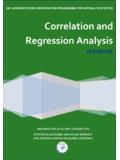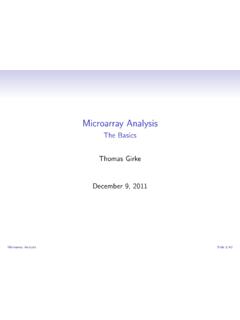Transcription of The Authors - Trailblazers
1 The Authors : 1 Steve Marcy and Janis Marcy Santa Monica-Malibu Unified School District Limited Reproduction Permission to duplicate these materials is limited to the teacher purchased. Reproduction for an entire school or school strictly prohibited. For Jennifer, Matt, Andy, and Jazz Cover bb Nimbus Design lllustratio s by Mark Lawler h Technical art by S~teve Reiling, Rohini Kelkar Edite d by Ann Roper ight GroupIMcGraw-Hill uden-tial Plaza ISBN: k88488-742-1 MIDDLE SCHOOL MATH WITH PIZ21 AZI! is a series of five books designed to provide practice with skills and concepts taught in today's middle school mathematics programs. The series uses many of the same puzzle formats as PRE-ALGEBRA WITH PIZZAZ! and ALGEBRA WITH PIZZAZ! both published by Creative Publications. We believe that mastery of math skills and concepts requires both good teaching and a great deal of practice. Our goal is to provide puzzle activities that make this practice more meaningful and effective.
2 To this end, we have tried to build into these activities three characteristics: 1. KNOWLEDGE-OERESULTS. Various devices are used in the puzzles to tell students whether or not their answers are correct. Feedback occurs immediately after the student works each exercise. For example, if a particular answer is not in the code or scrambled answer list, the student knows it is incorrect. He or she can then try again or ask for help. Additional feedback and reinforcement occurs when the student finds a puzzle solution that is appropriate. This immediate knowledge of results benefits students and also teachers, who no longer have to spend time confirming correct answers. 2. A MOTIVATING GOAL FOR THE STUDENT. The puzzles are designed so that students will construct a joke or unscramble the answer to a riddle in the process of checking their answers. The humor operates as an incentive, because the students are not rewarded with the punch line until they complete the exercises.
3 While students may decry these jokes as "dumb" and groan loudly, our experience has been that they enjoy the jokes and look forward to solving the puzzles. The humor has a positive effect on class morale. In addition to humor, the variety and novelty of procedures for solving the puzzles help capture student interest. By keeping scrambled answer lists short and procedures simple, we have tried to minimize the time spent on finding answers or doing other puzzle mechanics. 3. CAREFUL SELECTION OF TOPICS AND EXERCISES. The puzzles within each topic area are carefully sequenced so that each one builds on skills and concepts previously covered. The sequence of exercises within each puzzle is designed to guide students in incre- mental, step-by-step fashion toward mastery of the skill or concept involved. A primary goal is the development of problem-solving ability. In order to solve problems, students need not only rules and strategies but also a meaningful understanding of basic concepts.
4 Some puzzles in this series are designed specif- ically to build concepts. Other puzzles, especially those for estimation, also help deepen students' understanding by encouraging them to look at numbers as quantities rather than just as symbols to be manipulated. For puzzles specifically keyed to problem solving, we have tried to write problems that are interesting and uncontrived. We have included extra information in some problems, and have also mixed problem types within sets, so that the problems cannot be solved mechanically. In addition to these efforts to make the puzzles effective, we have tried to make them easy to use. The topic for each puzzle is given both at the bottom of the puzzle page and in the Table of Contents on pages iv and v. Each puzzle is keyed to a specific topic in recent editions of leading middle school textbooks. Each puzzle requires duplicating only one page, and many of them provide space for student work.
5 Finally, because the puzzles are self- correcting, they can eliminate the task of correcting assignments. Wk hope that both you and your students will enjoy using these materials. Steve and Janis Marcy iii Table of Contents 1 . RATIO AND PROPORTION .. a Ratio 7 .. b . Ratio and Rate 8 c . Solving Proportions .. 9 d . Problem Solving: Using Proportions .. 10 e . Using a Calculator: Solving Proportions .. 1 f . Similar Figures .. 12 .. g . Scale Drawings 13 2 . PERCENT .. a . Percent I 4-1 5 b . Percent and Fractions .. 16-1 9 .. c . Percent and Decimals 20 .. d . Estimating Percents 21 e . Mental Math: Finding a Percent of a Number .. 22 f . Estimating a Percent of a Number .. 23-24 g . Finding a Percent of a Number .. 25-26 h . Finding a Percent of a Number: Percents Greater .. Than 1 00% or Less Than 1 % 27 .. i . Problem Solving: Choosing a Calculation Method 28 j . Problem Solving: Discounts and Sale Prices.
6 29 k . Problem Solving: Simple Interest .. 30 I . Finding the Percent One Number Is of Another .. 31, 33 m . Estimating the Percent One Number Is of Another .. 32 .. n . Problem Solving: Mixed Applications -34 .. o . Finding a Number When a Percent of It Is Known 35-36 .. p . Problem Solving: Mixed Applications -37 3 . STATISTICS AND GRAPHS .. a . Mean and Range 38 .. b . Median and Mode 39 .. c . Pictographs 40 d . Bar Graphs .. 4-42 .. e . Histograms 43 f . Line Graphs ..4 4-45 .. g . Circle Graphs .4 6-48 4 . PROBABILITY .. Probability 49 .. Probability: Expected Outcomes -50 .. Possible Outcomes -51 .. d . Independent Events 52 .. e . Dependent Events 53 f . Permutations .. 54 5 . INTEGERS .. a Integers 55 b . Comparing and Ordering Integers .. 56 .. c . Adding Integers: Using the Number Line 57 d . Adding Integers: Like Signs .. 58 e . Adding Integers: Unlike Signs .. 59-60 f . Subtracting Integers .. 61 g.
7 Review: Addition and Subtraction .. 62 h . Multiplying Integers .. 63 i . Review: Addition, Subtraction. Multiplication .. 64 j . Dividing Integers .. -65 k . Review: All Operations with Integers .. 66 6 . COORDINATE GRAPHING a . Graphing Ordered Pairs: First Quadrant .. 67 b . Graphing Ordered Pairs: All Quadrants .. -68-69 7 . EQUATIONS a . Equations: Concept of Solution .. 70 b . Solving Equations: x + a = b .. 71 c . Solving Equations: x - a = b .. 72 d . Solving Equations: ax = b .. 73 e . Solving Equations: = b .. 74 f . Review: Solving One-Step Equations .. 75 g . Solving Equations: ax + b = c .. 76 h . Equations in Two Variables .. 77 8 . ENRICHMENT a . Test of Genius .. 78 9 . ANSWERS ..7 NOTES ABOUT USING THE PUZZLES The selection of topics for MIDDLE SCHOOL MATH WITH PIZAZZ! reflects recent thinking about what is important in an updated middle school math program. Virtually every puzzle can be matched with a particular lesson in recent editions of popular textbooks.
8 After students have received instruction in a topic and worked some sample exercises, you might assign a puzzle along with a selection of textbook exercises. Students in the middle grades should begin to class@ many mathematics problems and exercises into one of three categories: 1. MENTAL MATH. Problems for which an exact answer can be obtained mentally. 2. ESTIMATION. Problems for which an approximate answer, obtained mentally, is sufficient. 3. TOOLS. Problems requiring an exact answer that cannot be obtained mentally. Students will use paper and pencil and/or calculators. Some of the puzzles in this series focus specifically on one'of these categories. A few puzzles actually present problems in all three categories and ask the student to make the classification. By the time they reach the middle grades, students should generally be permitted to use calculators for problems that require tools (Category 3).
9 The most common argument against calculator use is that students will become overly dependent on them. This concern, though, appears to be based primarily on fear that students will rely on the calculator for problems in Categories 1 and 2, those that should be done mentally. To solve problems in Category 3, calculators are wonderful tools for computing. Students may also need paper and pencil to make diagrams, write equations, record results, etc., so they will need both kinds of tools. On the other hand, students should not need calculators for problems in Categories 1 and 2, problems that call for mental math or estimation. Skills in these areas are essential not only in daily life but also for the intelligent use of the calculator itself. The puzzles in this series reflect these three categories and the distinction between them. When students do use calculators, you may want to have them write down whatever numbers and operations they punch in and their answers.
10 This makes it easier to identify the cause of any error and assists in class management. Even when students do mental math or estimation puzzles, have them write a complete list of answers and, where appropriate, the process used to get the answers. Encourage students to write each answer before locating it in the answer list. Students should complete all the exercises even if they discover the answer to the joke or riddle earlier. One advantage of using a puzzle as an assignment is 'that you can easily make a transparency of the page and display the exercises without having to recopy them on the board. You can then point to parts of a problem as you discuss it. It is often helpful to cut the transparency apart so that you can display exercises on part of the screen and write solutions on the remaining area. Other books by Steve and Janis Marcy published by Creative Publications Pre-Algebra With Pizzazz! in a Binder Covers most topics in a pre-algebra curriculum Algebra With Pizzazz!


